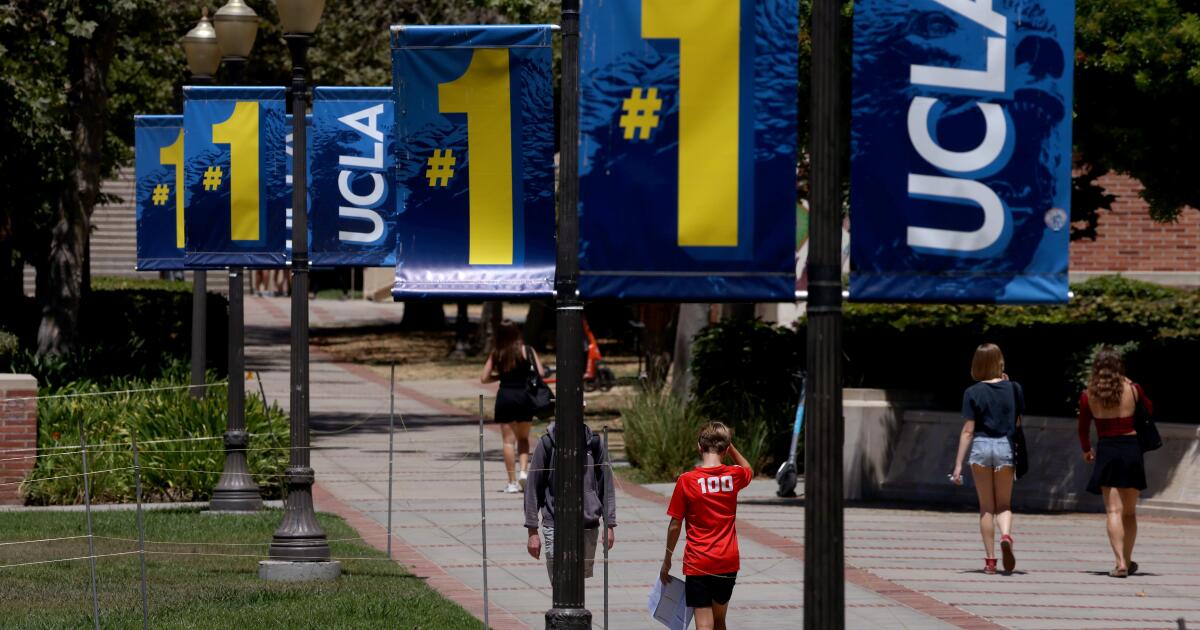Another 12 years have passed, and now it is time to welcome The Year Of The Dragon once again.
If you’re still racking your brain for destination ideas for 2024, why not create a fun travel wish list revolving around places with names that take after the majestic mythical creature?
Don’t be mistaken into thinking that the list can only be filled with Asian destinations – even though it does draw inspiration from the Chinese zodiac.
While dragons are revered in most parts of Asia, and in the Western context they may be different from their Asian counterparts, they do feature prominently around the globe. Hence, the ubiquitous influence of naming places across nations with the word “dragon” in the local language.
Of course, our list here isn’t exhaustive, but hopefully it will serve as a good starting point for your 2024 voyage!
Changting’s Wolong Academy is one of the popular tourist sites in Longyan. — YUMING ZHANG/Unsplash
Longyan and Heilongjiang, China
Where best to start than in China itself? (Also, seize the opportunity to make full use of the visa-free travel!)
Head to Longyan, a prefecture-level city located in the Fujian province, to fully immerse yourself in Chinese culture.
Meaning “dragon rock”, Longyan boasts a traditional charm that will make you feel as if you have been transported to ancient times.
Places of interests include the Yongding Tulou and Changting. Tulou, which translates to “earthen building”, is the unique dwelling of the Hakka and Minnan people in rural mountainous areas. The Yongding Tulou is part of the Fujian Tulou Unesco World Heritage Site, along with several others scattered throughout the southeastern province.
Meanwhile, Changting is a county rich with Hakka culture. Most of its ancient buildings and structures – such as the Wolong Academy and Huiji Gate – are preserved for historical and cultural reasons, resulting in a movie-like atmosphere.
Arguably, the more popular “dragon place” in China is Heilongjiang (Black Dragon River), the country’s northernmost province.
Due to its geographical location, which borders Russia, it is not surprising to see Russian influence in its architecture. This is especially true in the capital city, Harbin, where buildings like the Saint Sophia Cathedral and the Old Synagogue Concert Hall can be found.
Of course, Harbin is also renowned among snow lovers for its annual International Ice And Snow Sculpture Festival that draws millions of visitors.
Ha Long Bay is one of the most picturesque tourist attractions in Vietnam. — VALERIY RYASNYANSKIY/Unsplash
Bai Tu Long Bay, Ha Long Bay and Dragon Bridge, Vietnam
Bai Tu Long Bay and Ha Long Bay may be neighbours, but the latter is more well-known thanks to its status as a twice-listed Unesco World Heritage Site (in 1994 and 2000) and one of the “7 Natural Wonders Of The World”.
Understandably so, as Ha Long Bay’s towering karst limestone pillars and shimmering emerald-green waters make for stunning backdrops for photos and relaxing getaways. Having said that, Bai Tu Long Bay is no less impressive when it comes to being a natural beauty.
Both bays are located in Quang Ninh, a northeastern province that is both mountainous and coastal. However, while Ha Long Bay is bustling with tourists, Bai Tu Long Bay is much less so due to it being less accessible. So, if you’re looking to enjoy pretty much the same landscape and activities – such as junk boat cruises, kayaking and caving – but with less crowds, Bai Tu Long Bay is your best bet.
You may have guessed that the “long” in these names means “dragon”. Legend has it, “Mother Dragon” and her children descended on Vietnam following the Jade Emperor’s request for protection against invaders.
The bay where the Mother landed was named Ha Long, meaning “descending dragon”, while the area that the younger dragons landed in was named Bai Tu Long, which, depending on the translation, carries the meaning of “son of the prostrating dragon” or “bowing down and showing respect to the dragon’s children”.
Another popular dragon attraction in Vietnam is found in Da Nang, namely the Dragon Bridge that stretches across the Han River. Measuring 666m long and 37.5m wide, the dragon spouts water and breathes fire at 9pm on the weekends.
Thailand’s famous Dragon Temple stands out for the colossal green dragon encircling it. — TAN KANINTHANOND/Unsplash
Wat Sam Phran and Dragon Descendants Museum, Thailand
If going only by its Thai appellation, the temple Wat Sam Phran would have nothing to do with the majestic creature wrapped around its pink 17-storey tower, as “Wat” simply means “temple” while “Sam Phran” refers to the name of the Thai district it is located in.
However, in English, it is very famously referred to as The Dragon Temple, warranting it a spot on this list.
Presenting a façade much like an imaginary building set in a fantasy film, it’s fascinating that it truly does physically exist in our realm. If you’re so inclined, you may even climb the spiralling dragon’s hollow body to reach the top of the 80m tall tower – or skip the hike and use the elevator.
For anyone whose interest falls more on museums than temples, the Dragon Descendants Museum in Suphan Buri may just be up your alley.
Do not go here expecting to learn about dragon ancestries though, but do look forward to learning more about Chinese history, as this museum was built in celebration of two decades of Thai-Chinese diplomatic relations back in 1996.
The museum is hard to miss – even if it doesn’t quite tower over the neighbourhood the way the Dragon Temple does – as it is interestingly shaped like a dragon. Measuring 135m long, 35m high and 18m wide, the undulating dragon holds 20 rooms within it that exhibit information regarding China and Thailand’s Chinese people and culture.
The Punakha Dzong is the second oldest dzong in Bhutan. — NIHAR MODI/Unsplash
Bhutan
Unlike its aforementioned Asian brethren, Bhutan doesn’t just have a few places within it with names meaning dragon – the country as a whole is known as Land Of The Thunder Dragon.
The moniker is derived from the term Druk Yul, the country’s name in its national language, Dzongkha. Yul translates to “land”, while Druk is the name of the thunder dragon in Bhutanese mythology. Bhutan wears this identity loud and proud, even emblazoning its national flag with the said dragon front and centre.
Tourism in Bhutan is fairly recent, about two decades later than China and Thailand and roughly around the same time as Vietnam. But since opening its doors to foreign tourists in 1974, Bhutan has managed to maintain its pristine surroundings by limiting the number of tourists and imposing a daily tariff aka Sustainable Development Fee.
If you’re planning a visit, do note that this daily tariff applies to Malaysians as well, though 2024 is a good time to go as it has been halved to US$100 (RM473). An eVisa is also required for short stays. There are no direct flights from Malaysia to Bhutan, so you’ll need to travel to Singapore or Bangkok in Thailand first to board the flights to its only international airport in Paro.
Places to visit include the Paro Taktsang, or the Tiger’s Nest Monastery; Bumthang, known as the country’s spiritual heartland; and Phobjikha Valley, home of the black-necked cranes.
Also interesting are the various dzongs or traditional Bhutanese fortresses dotting the small landlocked country. Among the popular ones are the Trongsa Dzong, the largest in Bhutan; the Simtoka Dzong, which is the oldest; and the Punakha Dzong, the second oldest and second largest.
Rue du Dragon is a street located in the 6th arrondissement of Paris. — MBZT/Wikimedia Commons
Rue du Dragon, France
Being a popular European destination, it’s unsurprising if you find yourself in the City Of Love one of these days. When you’re there, diversify your itinerary by visiting somewhere else beyond the highly popular tourist spots such as Eiffel Tower, Notre Dame or Arc de Triomphe.
Maybe when you’re done queueing and briefly admiring the famous Mona Lisa, you can take a roughly 15-minute walk from the Louvre museum all the way to a picturesque street bearing the name Rue Du Dragon (Dragon Street).
Located in the city’s 6th arrondissement, you can also take the Metro to Mabillon, where the street is a mere one-minute walk away. The beautiful buildings that line the street not only make for Instagram-worthy backdrops, but they are also historical wonders, having been built in the early 18th century.
In fact, it was at 30 Rue du Dragon that Victor Hugo, the famous French writer who penned The Hunchback Of Notre Dame and Les Misérables, wrote a few of his masterpieces. Look close enough and you’ll see the plaque on the building proclaiming so.
Should you have time to venture to the northernmost region of France, namely Hauts-de-France, make your way to its city Oulches-la-Vallée-Foulon. One of its more well-known attractions is Caverne du Dragon (The Dragon’s Cave), a former limestone quarry that operated from the 16th century until the 19th century.
In the 20th century, it was used as underground barracks by both German and French troops. Now a remembrance museum stands there, recreating the daily lives of the soldiers.
One of the dragon statues guarding the Dragon Bridge in Slovenia’s capital city, Ljubljana. — VIOLA KOVACS/Unsplash
Ljubljana, Slovenia
Here’s another European destination that won’t require you to apply for a visa for short-stay trips. But just like travelling to Paris, you will need to transit at another airport as there are no direct flights to Slovenia’s capital, Ljubljana, from anywhere in Malaysia.
Don’t let that deter you from paying a visit to this Central European country, though, as its medieval charm and scenic natural wonders will no doubt sweep you off your feet.
Ljubljana is alternatively called The City Of Dragons. Legend has it that an ancient Greek mythological hero named Jason slayed a dragon living at a large lake that served as a source for Ljubljanica, the river that Ljubljana lies on.
For this reason, the city becomes synonymous with dragons. Not only will you see a dragon on Ljubljana’s coat of arms, but also four dragon statues on each corner of its famous Dragon Bridge. Besides, the city is a perfect place for purchasing dragon merchandise as it is readily available in various places.
Fortune Dragon Yong Peng and Tua Pek Kong Temple, Malaysia
Fret not if travelling locally is what you wish to do more of this year, as you can still visit a dragon destination by heading either to Johor or to Perak.
In Johor, there is a 115m long and 4.8m tall golden dragon by the name of Fortune Dragon (also Prosperity Dragon) found in Yong Peng. Apart from snapping tons of photos at the place, you can also venture inside the belly of the beast, literally!
Photography is not allowed inside, however, but you can snap a selfie or two at the dragon’s mouth. The “body” or tunnel is air-conditioned so don’t worry about it getting too stuffy or hot inside, where you will be regaled with 42 paintings depicting Buddhism and the afterlife, before exiting through its tail.
For a smaller but no less beautiful dragon tunnel, visit the Tua Pek Kong Temple in Sitiawan, Perak. As you walk through the body of this colourful dragon, take the time to appreciate the panels bearing the illustration of the ancient Chinese belief, The Ten Chambers Of Hell.
The Tua Pek Kong Temple often surprises visitors with its massive grounds, so make sure you are well-prepared with comfortable footwear, and bring along an umbrella or hat to shield yourself from Malaysia’s bright sunlight.


